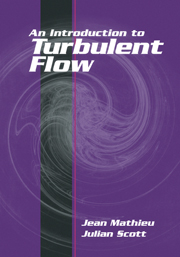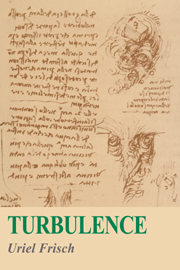Refine search
Actions for selected content:
8124 results in Fluid dynamics and solid mechanics
8 - Analysis of Cylinders
-
- Book:
- Strength of Materials
- Published online:
- 03 June 2025
- Print publication:
- 13 August 2018, pp 313-361
-
- Chapter
- Export citation
5 - Flexural Shear Stress
-
- Book:
- Strength of Materials
- Published online:
- 03 June 2025
- Print publication:
- 13 August 2018, pp 179-207
-
- Chapter
- Export citation
Chapter 5 - Flexural Shear Stress
-
- Book:
- Strength of Materials
- Published online:
- 03 June 2025
- Print publication:
- 13 August 2018, pp 179-207
-
- Chapter
- Export citation
A SIMULATION STUDY OF TEXAS HOLD ’EM POKER: WHAT TAYLOR SWIFT UNDERSTANDS AND JAMES BOND DOESN’T
- Part of
-
- Journal:
- The ANZIAM Journal / Volume 60 / Issue 1 / July 2018
- Published online by Cambridge University Press:
- 08 August 2018, pp. 55-64
-
- Article
-
- You have access
- Export citation
THE PHILLIP ISLAND PENGUIN PARADE (A MATHEMATICAL TREATMENT)
- Part of
-
- Journal:
- The ANZIAM Journal / Volume 60 / Issue 1 / July 2018
- Published online by Cambridge University Press:
- 08 August 2018, pp. 27-54
-
- Article
-
- You have access
- Export citation
INTEGRAL EQUATION FORMULATION FOR SHOUT OPTIONS
- Part of
-
- Journal:
- The ANZIAM Journal / Volume 60 / Issue 1 / July 2018
- Published online by Cambridge University Press:
- 08 August 2018, pp. 65-85
-
- Article
-
- You have access
- Export citation

Applied Nonsingular Astrodynamics
- Optimal Low-Thrust Orbit Transfer
-
- Published online:
- 04 August 2018
- Print publication:
- 16 August 2018

Fluid Mechanics
-
- Published online:
- 04 August 2018
- Print publication:
- 12 April 2018
SERIES SOLUTION OF LAPLACE PROBLEMS
- Part of
-
- Journal:
- The ANZIAM Journal / Volume 60 / Issue 1 / July 2018
- Published online by Cambridge University Press:
- 06 July 2018, pp. 1-26
-
- Article
-
- You have access
- Export citation
RECIPROCITY RELATIONS FOR A CONDUCTIVE SCATTERER WITH A CHIRAL CORE IN QUASI-STATIC FORM
- Part of
-
- Journal:
- The ANZIAM Journal / Volume 60 / Issue 1 / July 2018
- Published online by Cambridge University Press:
- 03 July 2018, pp. 86-94
-
- Article
-
- You have access
- Export citation
ANZ VOLUME 59 ISSUE 4 COVER AND BACK MATTER
-
- Journal:
- The ANZIAM Journal / Volume 59 / Issue 4 / April 2018
- Published online by Cambridge University Press:
- 27 June 2018, pp. b1-b8
-
- Article
-
- You have access
- Export citation
EDITORIAL: MECHANICS IN BIOLOGY
-
- Journal:
- The ANZIAM Journal / Volume 59 / Issue 4 / April 2018
- Published online by Cambridge University Press:
- 27 June 2018, pp. 413-415
-
- Article
-
- You have access
- Export citation
ANZ VOLUME 59 ISSUE 4 COVER AND FRONT MATTER
-
- Journal:
- The ANZIAM Journal / Volume 59 / Issue 4 / April 2018
- Published online by Cambridge University Press:
- 27 June 2018, pp. f1-f2
-
- Article
-
- You have access
- Export citation
PHOTOFOCUSING OF MICROORGANISMS SWIMMING IN A FLOW WITH SHEAR
- Part of
-
- Journal:
- The ANZIAM Journal / Volume 59 / Issue 4 / April 2018
- Published online by Cambridge University Press:
- 08 June 2018, pp. 455-471
-
- Article
-
- You have access
- Export citation
THRIFTY SWIMMING WITH SHEAR-THINNING: A NOTE ON OUT-OF-PLANE EFFECTS FOR UNDULATORY LOCOMOTION THROUGH SHEAR-THINNING FLUIDS
- Part of
-
- Journal:
- The ANZIAM Journal / Volume 59 / Issue 4 / April 2018
- Published online by Cambridge University Press:
- 08 June 2018, pp. 443-454
-
- Article
-
- You have access
- Export citation
NONSYMMETRIC BRANCHING OF FLUID FLOWS IN 3D VESSELS
- Part of
-
- Journal:
- The ANZIAM Journal / Volume 59 / Issue 4 / April 2018
- Published online by Cambridge University Press:
- 08 June 2018, pp. 533-561
-
- Article
-
- You have access
- Export citation
TEMPORAL AND SPATIAL HETEROGENEITY IN PULMONARY PERFUSION: A MATHEMATICAL MODEL TO PREDICT INTERACTIONS BETWEEN MACRO- AND MICRO-VESSELS IN HEALTH AND DISEASE
- Part of
-
- Journal:
- The ANZIAM Journal / Volume 59 / Issue 4 / April 2018
- Published online by Cambridge University Press:
- 07 June 2018, pp. 562-580
-
- Article
-
- You have access
- Export citation

An Introduction to Turbulent Flow
-
- Published online:
- 28 May 2018
- Print publication:
- 26 June 2000
-
- Textbook
- Export citation

Turbulence
- The Legacy of A. N. Kolmogorov
-
- Published online:
- 28 May 2018
- Print publication:
- 30 November 1995
-
- Textbook
- Export citation

A First Course in Fluid Dynamics
-
- Published online:
- 28 May 2018
- Print publication:
- 10 November 1983
-
- Textbook
- Export citation
